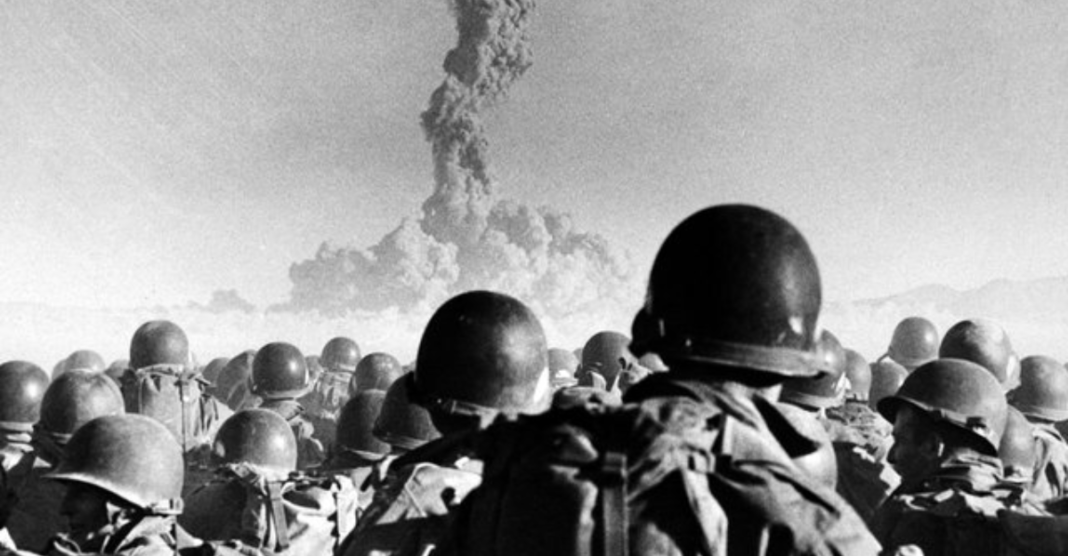Every year on August 29th, we observe the International Day Against Nuclear Tests to actively raise awareness about the perils associated with nuclear explosions, encompassing nuclear weapon trials and other related detonations. The goal of the International Day Against Nuclear Tests is to raise public awareness about the need to avert nuclear disasters in order to avoid catastrophic consequences for the human race, the environment, and the planet.
Value of the International Day Against Nuclear Tests
After 1945, nations conducted nuclear tests, but before that, people paid little to no attention to the adverse impacts and potentially catastrophic outcomes of such tests. Since then, researchers have carried out over 2000 experiments, and many of these have inflicted horrifying and terrible impacts on both the environment and human life.
Moreover, radioactive fallout from atmospheric testing poses risks. Recognizing the significance of addressing this damage, experts advocated for designating a specific day to enhance awareness about the gravity of the issue. Consequently, the international community observes the Annual International Day against Nuclear Tests on August 29th to promote public consciousness regarding the detrimental effects of nuclear testing.
All state parties committed in May 2010 to “achieve the peace and security of a world without nuclear weapons” after the day’s formation.
History of Kazakhstan 40-Year Nuclear Testing History
On December 2, 2009, the UN General Assembly’s 64th session passed resolution 64/35, designating August 29 as the International Day against Nuclear Tests. In order to accomplish the goal of a nuclear-weapons-free world, the resolution calls for increasing awareness and educating people “about the consequences of nuclear explosions, including those used in nuclear weapon tests, and the need to end them.” On August 29, 1991, the Republic of Kazakhstan sponsored the resolution to mark the closure of the Semipalatinsk Nuclear Test site, collaborating with various sponsors and cosponsors.
Since 2010, people around the world have celebrated the inaugural International Day Against Nuclear Tests. Every year since then, they have planned various events such as symposia, conferences, exhibits, contests, publications, lectures, media broadcasts, and other efforts to commemorate the day.
Nuclear testing’s aftereffects
The recent movie “Oppenheimer” by Christopher Nolan, which is about the development of the atomic bomb during World War II, is still the subject of contentious debates. She asserted that the Hollywood film, however, “was silent about the human cost of local communities, known as the New Mexico ‘downwinders,’ and it was focused on the Trinity Test [the first detonation of an American nuclear weapon] and its successful outcome.”
The United States directed the Manhattan Project, a collaborative military and scientific endeavor aimed at constructing the first atomic weapons, and conducted the Trinity nuclear test as part of it.
The 456 nuclear experiments (340 underground and 116 aboveground) carried out at the Semipalatinsk polygon over the course of more than four decades have caused suffering for close to 1.5 million Kazakhs.
Early in the 1990s, Kazakhstan had a pressing need to protect hazardous items, stop brain drain, and begin remediation and cleaning efforts related to WMD. The nation joined the nonproliferation regime and delivered over 1,400 Soviet nuclear weapons to Russia after the collapse of the Soviet Union.
The renowned nuclear non-proliferation expert from Kazakhstan, Kalinina-Pohl, gained deeper insights into the hardships faced by those impacted by nuclear testing in Kazakhstan, thanks to her reading of the book “Atomic Steppe: How Kazakhstan Gave Up the Bomb.” She advised reading it since “this story came after a full understanding of the complexity and pain of the decision to close the test site.”
ALSO READ Durand Cup 2023: Mohun Bagan defeated Mumbai City FC to get to the semi- finals.
Central Asian nuclear and radiological security
The Central Asian Nuclear-Weapon-Free Zone (CANWFZ) initiative’s 30th anniversary falls this September, marking another significant day in the history of nuclear disarmament. In 2006, in the Kazakh city of Semei, it resulted in the signing of the Treaty on a Nuclear-Weapon-Free Zone in Central Asia (Kazakhstan, Kyrgyzstan, Tajikistan, Turkmenistan, and Uzbekistan), also known as the Treaty of Semipalatinsk.
The author, Kalinina-Pohl, was born in Kyrgyzstan, not far from a former uranium mine site. Central Asian republics are starting nuclear energy programs for civilian use together with other nations in the world.
Knowledge of nonproliferation
The specialist highlighted the increasing significance of educating about nonproliferation, suggesting that we should not only teach nonproliferation at the university level but also introduce it into high school curricula.
For instance, CNS manages a program called the Critical Issues Forum for teachers and high school students. It enables students from the United States, Japan, and, until recently, Russia to debate nonproliferation, arms control, and disarmament and how they might help to lessen existential dangers resulting from the proliferation of WMD. It is directed by its manager and research associate, Masako Toki.
In the late 1990s, the Non-Aligned Movement (NAM) nations incorporated its program, and in 2007, they extended their efforts to additional areas. The Newly Independent States (NIS) of the former Soviet Union, including Armenia, Azerbaijan, Belarus, Georgia, Kazakhstan, the Kyrgyz Republic, Moldova, Russia, Tajikistan, Turkmenistan, Ukraine, and Uzbekistan, were the program’s first emphasis.
Cooperation with universities in Kazakhstan
The expert indicated a desire to strengthen collaboration with Kazakh institutions in nonproliferation education.
“We trained a faculty member at Nazarbayev University (NU). Additionally, my colleagues and I went to its campus in 2014 and had a conversation with the NU administration regarding a prospective partnership.
Kazakhstan actively participated in the preparation and adoption of the Treaty on the Prohibition of Nuclear Weapons (TPNW) as a result of its historical commitment to nuclear disarmament.To expedite its enforcement, the implementation took place in January 2021.By the end of this year, the nation will hold the TPNW chairperson position, and its key priorities will be victim relief and environmental cleanup.

